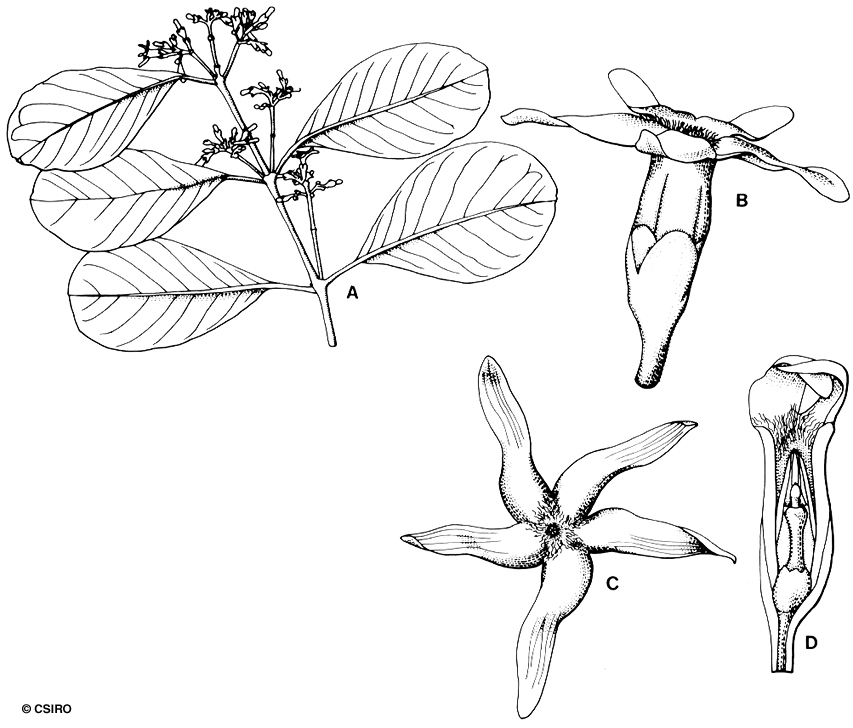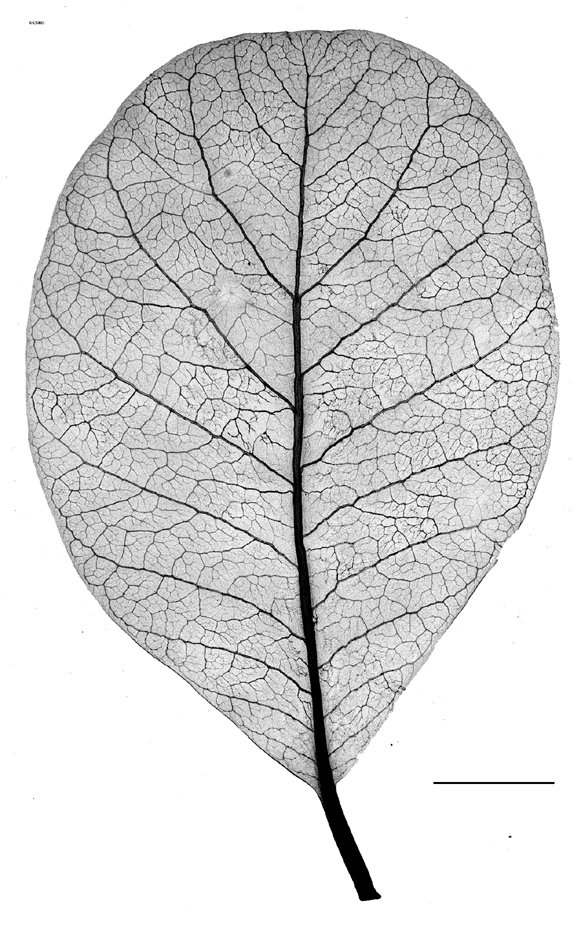Australian Tropical Rainforest Plants - Online edition
Ichnocarpus rhombifolius (Markgr.) D.J.Middleton







Middleton, D.J. (1994) Blumea 39: 84.
Vine stem diameters to 6 cm recorded. Living bark layer quite thick. Juvenile shoots cling by means of roots while mature shoots climb by twining.
Flowers about 8-15 mm diam. Calyx tube about 2-2.5 mm long, lobes about 1.5-3 mm long. Corolla tube about 5-7 mm long, inner surface hairy, lobes about 7 mm long. Anthers shaped like arrowheads, about 3-4 mm long, filaments about 2 mm long. Ovary about 4.5-5 mm long, base surrounded by 5 glands or a lobed disk. Style expanded to form a style head resembling a crows nest on a mast. Ovules numerous.
Fruits 2-armed, divaricate, each fruiting carpel about 16-18.5 x 0.8-0.9 cm, outer surface clothed in short brown hairs. Seed about 16-19 mm long. Plume golden brown, about 60 mm long. Embryo green, about 17 mm long. Radicle short, about 1 mm long.
About 2-4 pairs of cataphylls produced before the first true leaves. First leaves +/- orbicular, apex obtuse to emarginate, base cordate. Leaf blades sparsely clothed in hairs on both the upper and lower surfaces. Several rusty brown stipule-like glands present on the stems between the points of attachment of the petioles. Adventitious roots present on some stems. At the tenth leaf stage: leaf blade broadly elliptic to orbicular, about 6-8 x 5-7 mm. Apex obtuse, base rounded to cordate. Stem clothed in short, pale brown hairs. Very small stipule-like glands visible on the stem between the petiole bases. Seed germination time 55 days.
In Australia known only from CYP. Altitudinal range from sea level to 500 m. Often grows in well developed gallery forests but also found in mountain rain forests. Also occurs in New Guinea.





